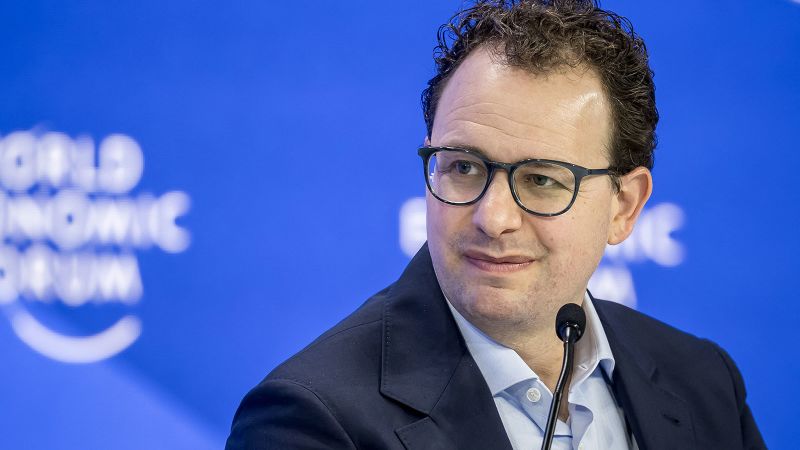The advancement of technology, particularly artificial intelligence (AI), evokes a spectrum of reactions that range from excitement to apprehension. Recently, Dario Amodei, the 42-year-old billionaire and CEO of Anthropic, made headlines by claiming that the emerging AI technologies could potentially eliminate nearly half of all entry-level office jobs within a short timeframe, possibly within the next couple of years. This statement, echoed in an interview with CNN’s Anderson Cooper, suggests a substantial shift in the workforce as AI systems evolve.
Amodei’s assertion highlights an increasingly prevalent notion in Silicon Valley: that revolutionary technologies like AI will initially disrupt established economic structures before ultimately rectifying them. He elaborated on this theme by suggesting that while AI could solve monumental problems—like curing cancer and ensuring substantial economic growth—this progress could paradoxically coincide with significant job displacement, leaving twenty percent of the population unemployed. Such declarations, despite sounding extreme, are part of a larger narrative that portrays AI as a panacea with an inherent capacity to address various societal dilemmas, albeit at a considerable cost.
However, Amodei’s lack of empirical backing for his 50% job loss estimate raises critical questions. An important point made by labor economist Aaron Sojourner is that the expectation of high unemployment coupled with robust economic growth is tenuous. The theory underpinning this equation presupposes an unprecedented jump in labor productivity, a scenario unsubstantiated by historical trends. During the technological upheaval of the 1980s and 1990s, computer adoption indeed transformed the labor landscape; however, productivity growth remained relatively modest at around 2% to 3%. Sojourner’s insights imply that Amodei’s optimistic projection lacks the foundational evidence necessary for validation.
The role of Amodei as a CEO inevitably tints his statements with a commercial intent—he needs to promote his product, AI, as an almost unavoidable component of future economic structures. This context illuminates why his remarks have been framed as foreboding predictions of a “white-collar bloodbath,” sparking widespread discourse and concern.
Interestingly, the reception of Amodei’s predictions isn’t without dissent, even among proponents of AI. Notably, Mark Cuban, the tech entrepreneur, pushed back against the bleak narrative of mass unemployment. He pointed to historical precedents where technological advancements led to job displacement yet also saw the emergence of new enterprises and roles, thereby increasing overall employment levels. Cuban’s perspective challenges Amodei’s fatalistic interpretation, suggesting that while certain job categories might decline, others will take their place, underscoring the dynamic nature of labor markets in the face of innovation.
Critically assessing the rhetoric surrounding AI, it becomes clear that while there is merit in acknowledging the potential risks and challenges posed by these technologies, the articulation of these threats often veers towards sensationalism. Anthropic’s self-identity as an “AI safety and research” organization, distinct from the more optimistic portrayals at firms like OpenAI, positions it in a unique space in the tech landscape. Nonetheless, it also raises questions about the motives behind the dramatic forecasting that often accompanies discussions around AI.
In examining the capabilities of generative AI technologies, such as OpenAI’s ChatGPT and Anthropic’s Claude, it’s evident they exhibit remarkable proficiency in niche tasks, including summarizing text and drafting basic communications. Yet, they also reveal inherent limitations—occasional inaccuracies, susceptibility to manipulation, and lapses in maintaining context or producing coherent responses. These frailties debunk the notion that AI alone will herald a utopian future free of labor burdens.
Finally, while the ambition to leverage AI for a transformative economic revolution is commendable, the pathway to achieving that aspiration is laden with questions and complexities. The onus lies on AI developers to provide clarity on how these technologies will not only rereshape labor dynamics but also address the ramifications that come with their integration into society. The conversation must pivot from mere alarmism to constructive discourse that examines the reality of these advancements and the responsibility borne by those at the forefront of this technological evolution.











